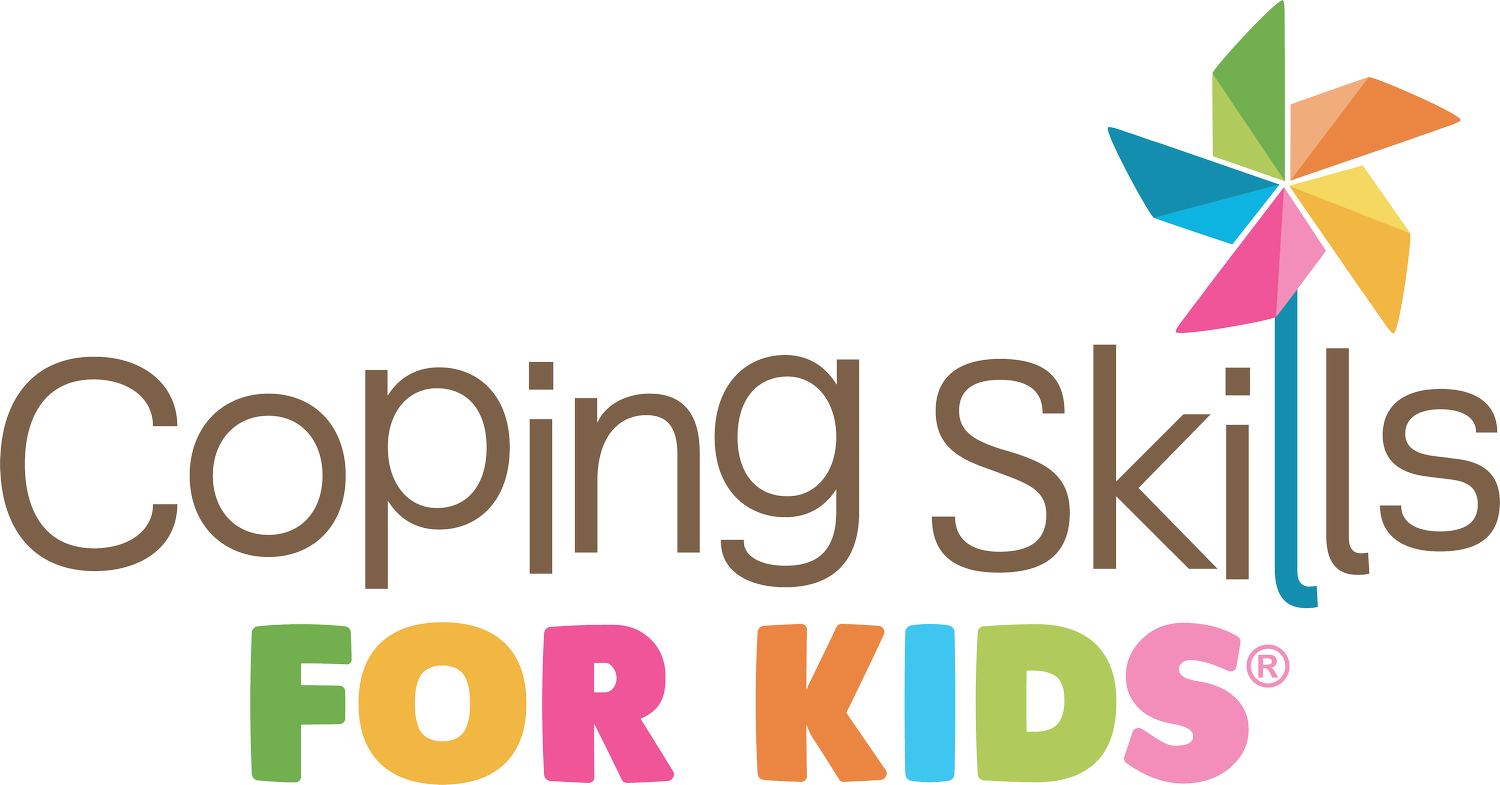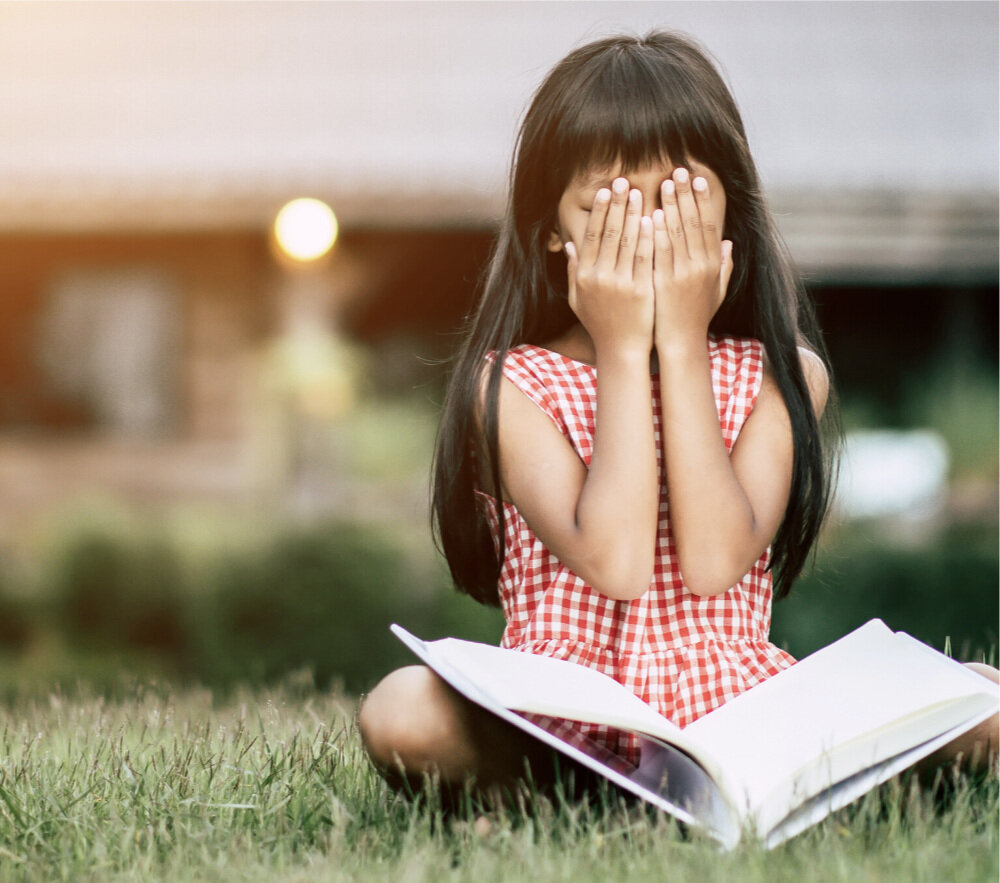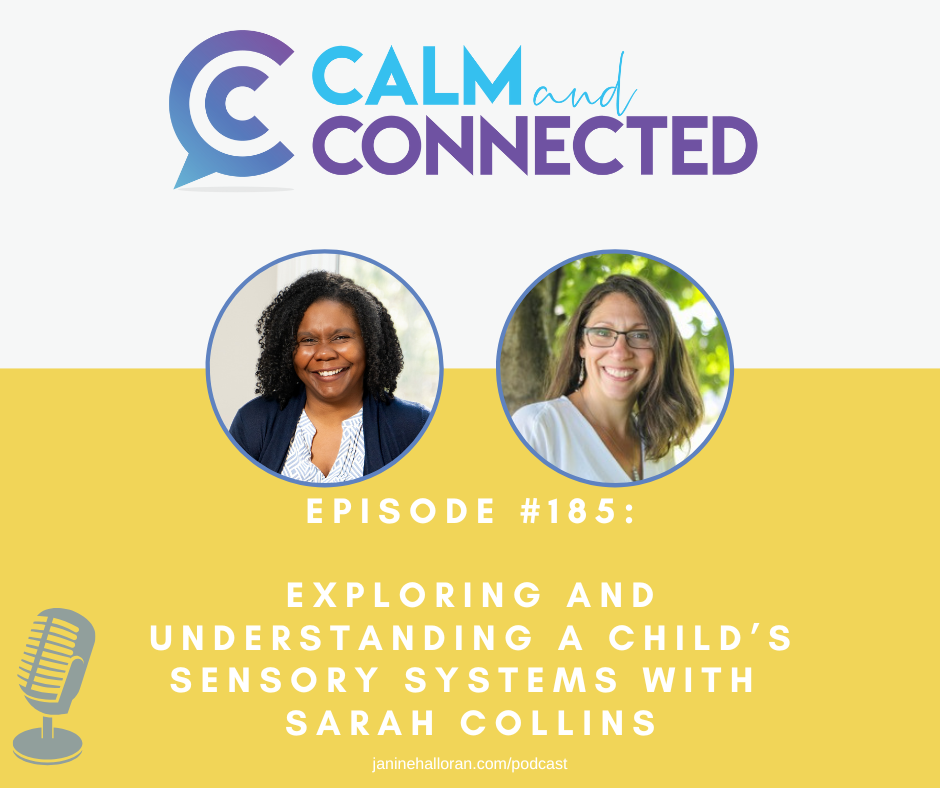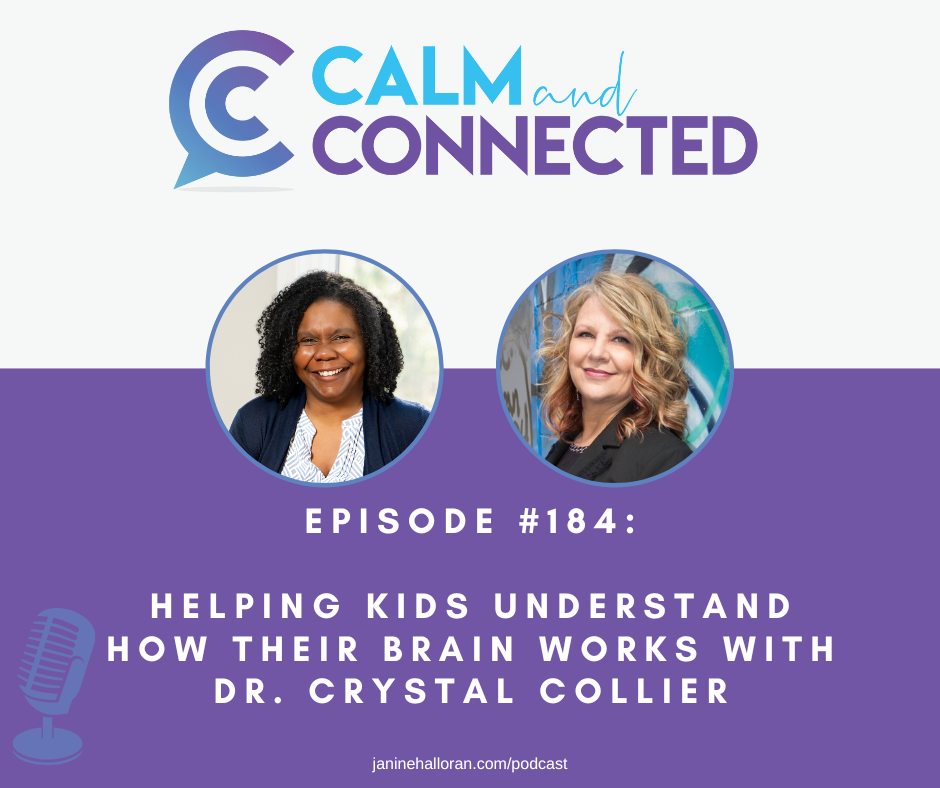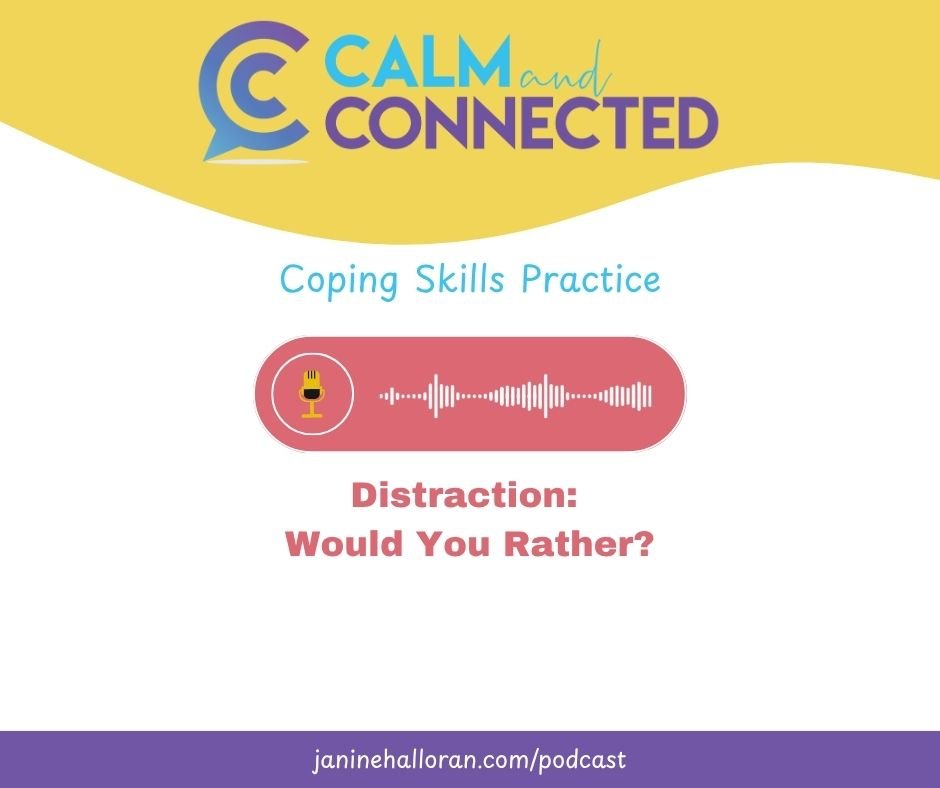Inside: A therapist’s favorite strategies to cope with stress in safe and healthy ways, with stress management techniques for children, teens and families.
This post contains affiliate links. Learn more here.
Over the last several years, I've noticed an increase in stress in my clients. When I talk with other professionals - counselors, educators, psychologists, etc. - they've seen it as well. A recent study even suggests that teens now are more stressed than teens who lived during the Great Depression. Let's explore some definitions of stress, then talk about coping skills to handle it.
Definitions of Stress
Stress: physical, mental, or emotional strain or tension. Sometimes stress happens in response to a particular event or experience, like a big exam is coming up, or getting a detention at school. This is called acute stress. But sometimes stress occurs over a long time and isn't resolved quickly, like stressing about getting into the right college, GPAs, and family finances (yes, even for kids). This is known as chronic stress.
Stress can be a little bit tricky to define because what is stressful to one person is not stressful at all to another. Different people react in different ways to the variety of stressors they experience. I've seen times when stress helps kids focus and study, and be ready to tackle a big exam or give an excellent performance on the field or the stage. On the other hand, I've also seen when stress is debilitating and makes it hard to accomplish things, tackle a to-do list, or get started on homework. Just like coping skills, what causes stress, and what would be considered the "right" amount of stress changes depending on the person.
Is all Stress Bad?
People tend to think about stress only in a negative way, but I don't think that's accurate. For example, when we make new friends, or graduate, or move, or get a new job, these are generally considered positive, exciting life events. But truthfully, they can be stressful too. Sometimes these more positive stressful situations are referred to as eustress.
What about Mindset?
Mindset plays a part too. There's a theory in psychology called "self-fulfilling prophecy." If you think it's going to be terrible, it probably will be terrible. But, if you think it's going to be okay, it's more likely that it's going to be okay. Your expectations and mindset about stress and the stressful situations you experience matters. If you think of yourself as resilient and capable, that impacts how you handle the pressure, how you tackle the situation, and how you move forward.
In general, my goal is to help kids and teens identify what they find stressful, make a plan for help manage that stress safely and healthily, and then have them accomplish what they want to do. Below are some ideas to help:
Coping with Stress
Deep Breathing
I always start talking with kids about taking deep breaths. Why? Let's talk a little bit about some automatic systems in the human body.
When kids (or adults for that matter) are calm, their bodies are in "rest and digest" mode. Their breathing is normal, their muscles are relaxed, and their heart rate is average. It's how they would be when they're watching a show and relaxing.
But then suddenly, a dinosaur is chasing them!!
When kids experience a stressful event (like an unexpected dinosaur in the living room), their body automatically goes into what is known as "flight, fight or freeze" mode. Their heart rate increases, their stomach stops digestion, and their breathing becomes more shallow.
Taking deep breaths can help them get from "flight, fight or freeze" mode back to "rest and digest" mode. Deep breathing helps get more oxygen into the bloodstream and opens up the capillaries. It has a physical effect on their body to help them calm down and lower stress.
There are SO MANY ways to help kids learn how to take a deep breath. If you need some inspiration, check out our resource page all about teaching children how to deep breathe in fun and playful ways.
Mindfulness
It's hard to slow down in such a fast-paced world. But children must learn how to do just that - slow down. Mindfulness helps kids focus on the present instead of focusing on the past or future. Here are a few ideas for practicing mindfulness:
Mindful Eating
Kids can do this no matter what they are eating. Invite kids to slow down and pay attention to their snack or meal. They don’t have to do it for the whole time - try just for a few bites. Notice how delicious it looks, the texture of it, and ask them about the flavors they taste. Have them take a moment to savor their food!
Go for a mindful walk
This can be a great group or family activity. Take a walk either in the house, in the school, or your neighborhood, and focus on your senses. Pay attention to what you see, hear, or smell. Ask about what people discovered. Did they see something they never saw before? Or hear something unusual? Did anyone notice things they hadn't noticed before?
Here's an article I wrote with more information on taking a mindful walk.
Mindful Listening Activity
Sit and take a few deep breaths. Close your eyes if you feel comfortable.
Focus on what you hear outside the room you're sitting in for one minute.
Focus on what you hear inside the room you're sitting in for one minute
Finally, focus on your own body for one minute. What is your body telling you? How do you feel?
Sit quietly and take a few more deep breaths, then open your eyes when you’re ready.
For more ideas about teaching mindfulness to kids, check out these resources:
Simple Ways to Introduce Mindfulness and Meditation to Children
Five Mindfulness Activities from Big Life Journal
Mindfulness Crafts from Counselor Keri
Can Mindfulness Make You a Better Parent? + Guided Meditations for Kids
What I can control vs. what I can’t control
There are some things you can control and some things you can’t. And situations like COVID-19 can highlight for us how many of the things we can’t control. Here’s a visual to help explore the things you do have control over and the things you don’t have control over in your life.
When we talk with kids, let’s encourage them to focus on what they CAN control: their actions, their words, their behaviors, and their responses. One sentence that can help prompt kids to think about what they can control: How can I make this better?
Have a Positive Mindset
Your mindset about stress matters and how you think about stress can make a difference. There is power in the word “YET.” By adding yet to the end of a sentence, it can help re-frame a child’s thinking about their capabilities and their ability to change:
I don’t get it
VS.
I don’t get it yet.
How kids talk to themselves makes a difference. Let’s encourage our kids to use positive self-talk (podcast episode)
If you want to learn more about the power of having a positive mindset and strengthening grit and resilience in our children, check out the work by Carol Dweck and Angela Duckworth.
Express Yourself in a Creative Way
When kids are stressed, sometimes there’s a lot of pent up thoughts and emotions, and they need to get it out. They can creatively express themselves. There is a ton of research about the positive impact of art and music on helping people manage their emotions and reduce stress. Here are some ideas:
Writing a book, or short story, or graphic novel
Composing music
Writing poems or raps
Dancing - either freestyle or making up choreography
Singing - songs or melodies you’ve heard and love, or make up your own
Painting - you can try different mediums and canvases
Drawing, sketching, or doodling
Use Your Hands to Create Something
Keeping your hands busy can have a positive impact on your mental well-being. Knitters report that they use knitting to relax and de-stress, and they say that it has a positive effect on their mood. Activities like quilting or crocheting are positive, healthy coping strategies kids can use.
These can keep hands busy while they watch tv, help pass the time, and give their eyes a much-needed break from a screen. Plus, they end up with a finished product when they’re done. Even if it doesn’t turn out perfectly the first time, they’ll get better with practice. Who knows? They may discover a hidden talent they didn’t think they had. And maybe they can even make things to give away to help others. Here are some ideas:
Knitting (on a circular loom or with knitting needles)
Crocheting
Sewing
Quilting
Rainbow Loom
Weaving
Collage making
Woodworking
Robotics
Model Building
Keep Your Schedule Simple
I’ve been an advocate for keeping a less busy schedule for years. It’s easy to get caught up in scheduling sports, enrichment activities, and appointments that you find yourself and your family completely booked up. But eating dinner in the car, never being able to sit down for a meal together, and continually going from morning until evening even on the weekends is a stressful way to live.
Since things have shut down during COVID-19, there’s been an interesting shift happening in some families. They are enjoying eating meals together, finding time to play board games, watching shows together, and exploring nature. I think some families have enjoyed and embraced this less harried, more pared-down schedule. And I hope that this experience has families re-examine how many things they want to schedule during the week. Perhaps families will not want to go back to being so scheduled. The changes caused by COVID-19 give us the perfect opportunity to rethink how many activities our family is involved with and what the best schedule is for our family.
Have Fun
Distraction coping skills are skills focused on fun activities and play. Distraction coping skills aren’t meant to help kids avoid or suppress their feelings. Instead, it gives their brains a break from flight, fight, or freeze mode and give their minds a chance to get back to rest and digest. It can also help those kids who tend to perseverate on things they can’t control, so they can hopefully move forward to get onto the things they need to do. There are so many different ways to have fun:
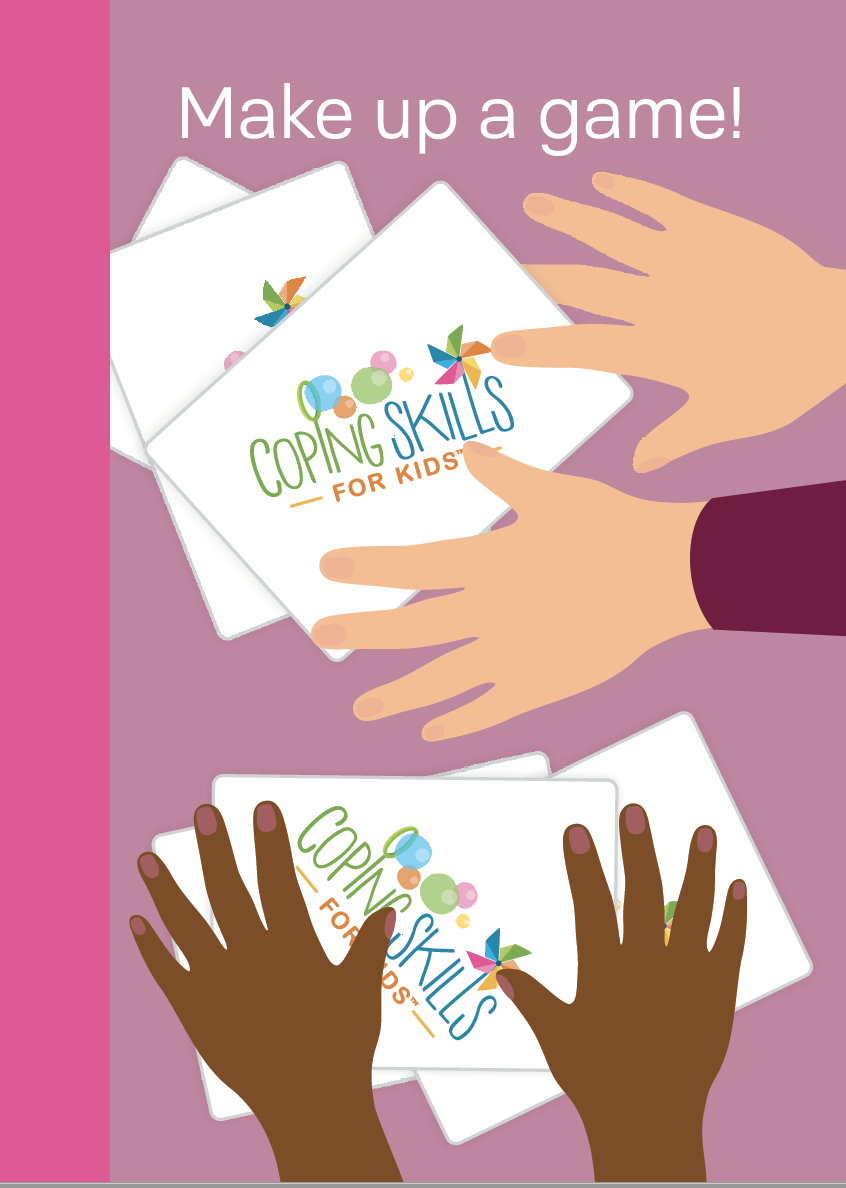
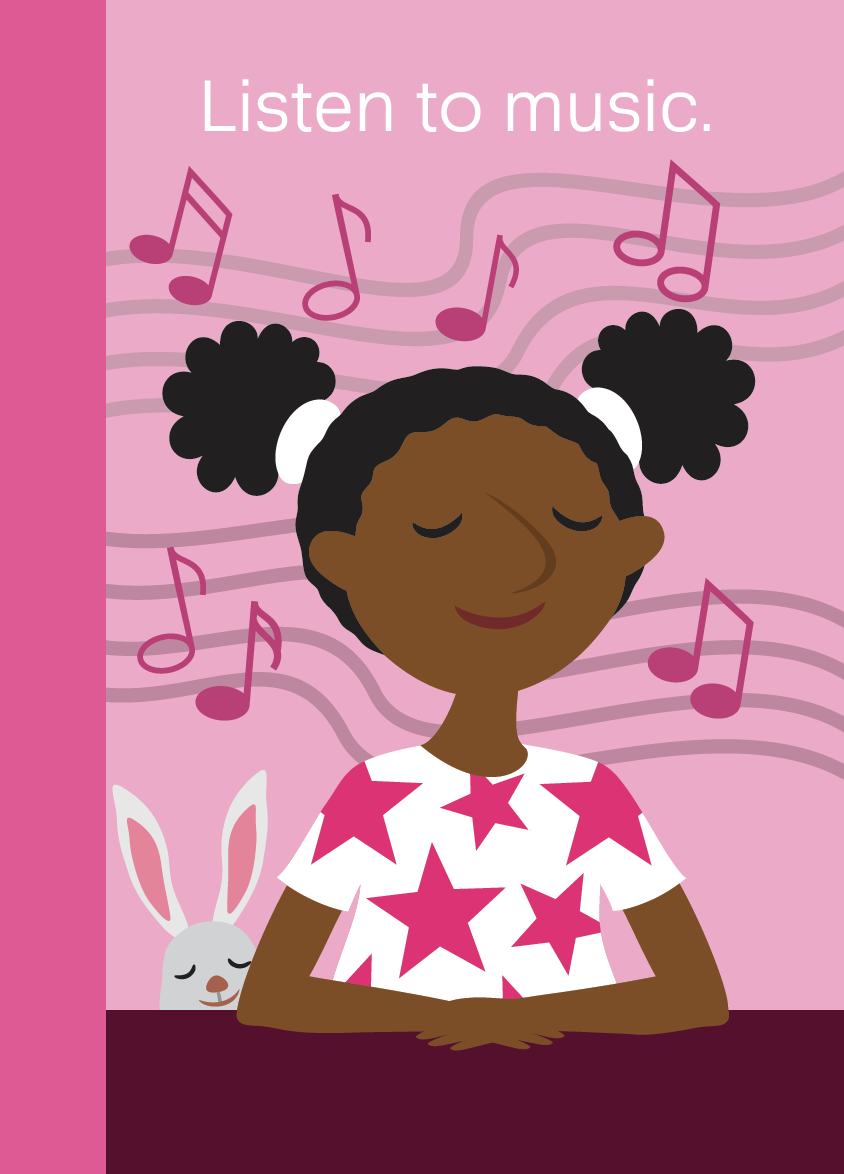


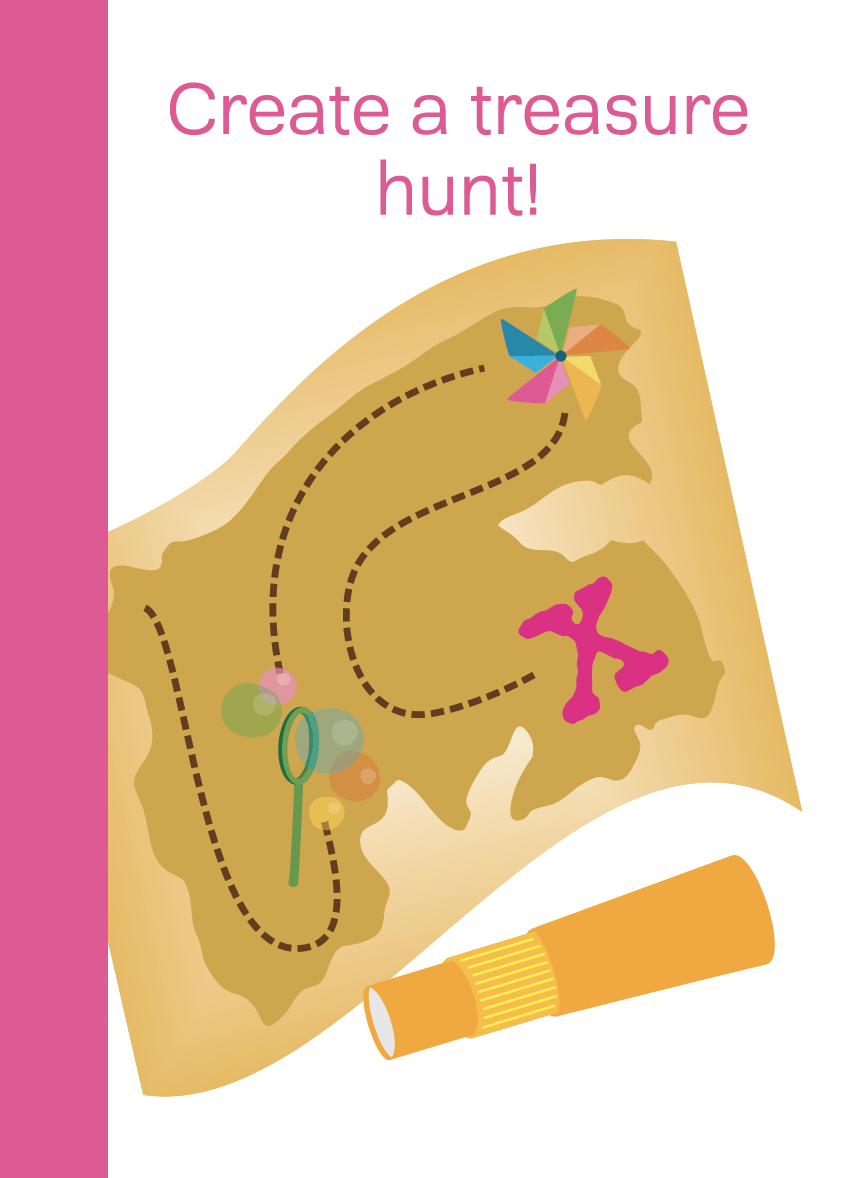
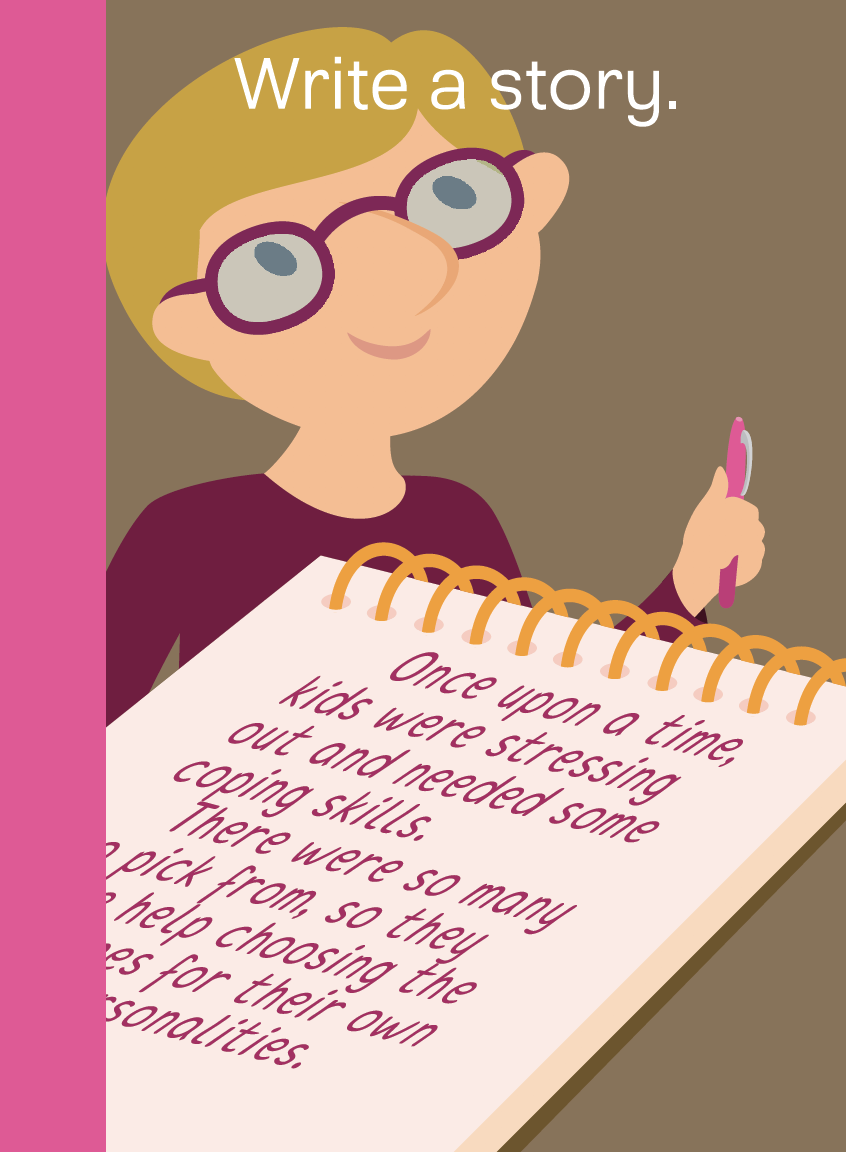
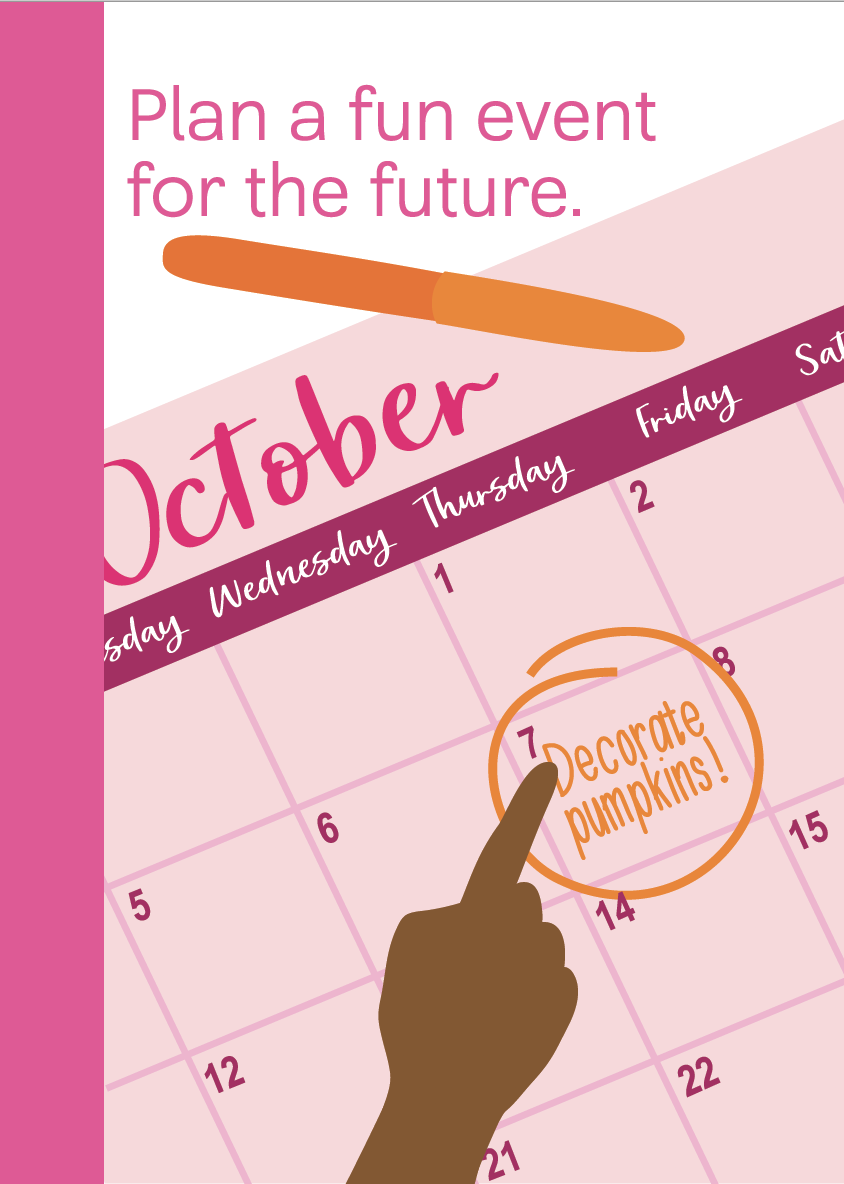
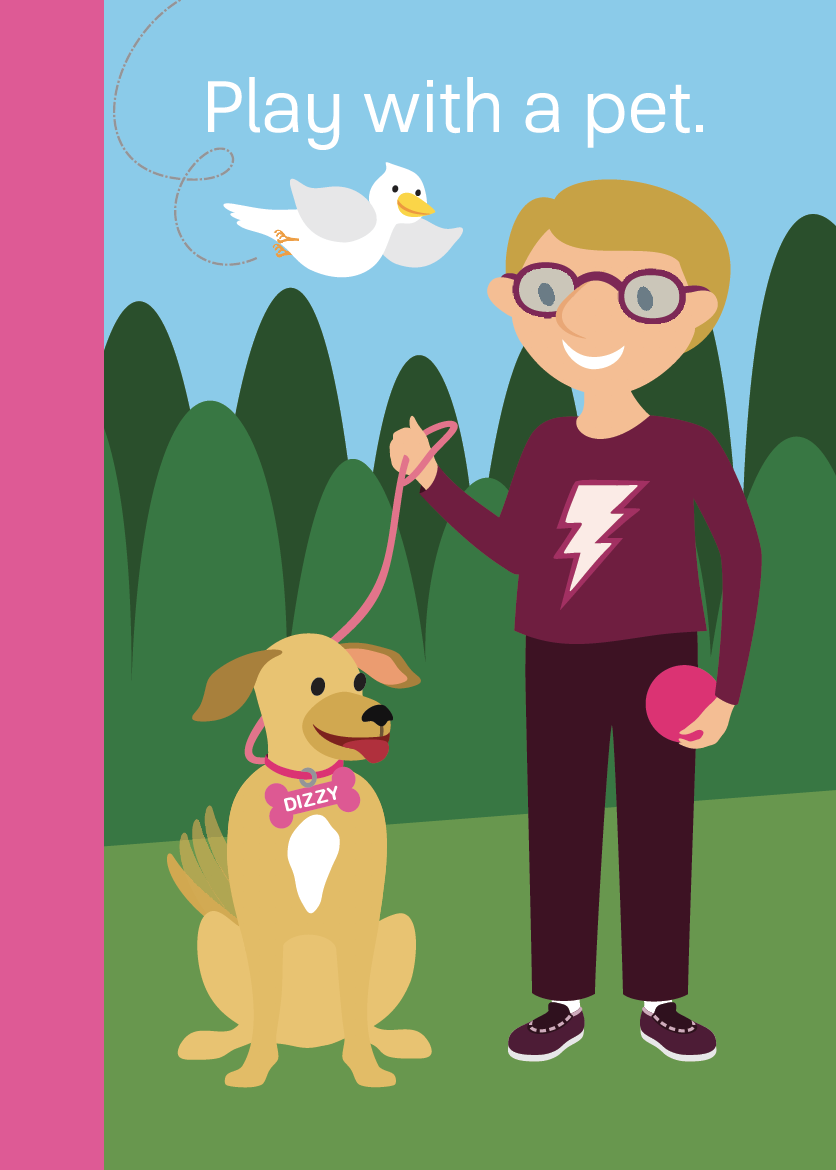
Talk to Someone You Trust
Talking to someone seems like a simple intervention, but it can do wonders for helping kids. When you share positive things with someone else, your joy grows. When you share negative thoughts or worries with someone else, it lessens the pain.
Talking to someone can make it easier to process situations that are happening. Kids may see things differently or be able to identify different thoughts and emotions around certain circumstances by chatting with someone. Having a conversation can also help kids get ideas for dealing with their problems.
Think of Positive Times & Practice Gratitude
There is a lot of research on the practice of gratitude, and how finding and focusing on the good things in life can have a positive impact on a person's physical, psychological, and social well-being. A simple way to help children start this practice is to help them focus on the positive things that have happened. Being grateful doesn't mean ignoring the negative experiences that occur, but instead concentrating on the good. Although every day may not be good, there is good in every day.
Ways to track the good:
Write it down on paper and put it in a jar
Use strips of paper to make a gratitude paper chain
Keep a Happiness Journal
Talk at mealtimes about the things that you're thankful for that day
Keep track of good things in the notes section on a phone
Help others (as a family or as part of a school club or project)
It can make someone's day when they receive something unique and unexpected. Depending on the random act of kindness that a kid chooses to do, they may or may not be able to see the person's reaction when they get the gift. No matter what, it feels great to do something kind for someone and know that you made a difference.
Here are several ideas for Random Acts of Kindness. Families can do together, or schools can also do these activities as a project or as a club.
Canned Food Drive
Clothing Drive
Giving away homemade hearts from Meri Cherry
Thank you note to the UPS driver
Donate Books to the Library
Donate Items to Goodwill
Leave fun items for kids at the park
Popcorn Surprise with a free printable from Coffee Cups and Crayons
Other places to Get Ideas for Kind Acts
Here are 100 Acts of Kindness from Coffee Cups and Crayon
penniesoftime.com - the entire site is dedicated to teaching kids to serve and doing kind acts. There are lots of great ideas here.
Boom Boom Cards - You can do random acts of kindness and track it online! There are different packs you can use as well.
Random Acts of Kindness.org is also a great place to start to get some ideas for acts of kindness to do with your family.
More from Coping Skills for Kids
Join the Hub
Resources
APA Stress Survey: Children are more stressed than parents realize. (2009). PsycEXTRA Dataset. doi: 10.1037/e562772011-005
Emmons, R., Emmons, R., University of California, & University of California. (n.d.). Why Gratitude Is Good. Retrieved from https://greatergood.berkeley.edu/article/item/why_gratitude_is_good/.
Emmons, R. A., & McCullough, M. E. (2003). Counting blessings versus burdens: An experimental investigation of gratitude and subjective well-being in daily life. Journal of Personality and Social Psychology, 84(2), 377–389. https://doi.org/10.1037/0022-3514.84.2.377
Froh, Jeffrey & Sefick, William & Emmons, Robert. (2008). Counting blessings in early adolescents: An experimental study of gratitude and subjective well-being. Journal of School Psychology. 46. 213-33. 10.1016/j.jsp.2007.03.005.
Jussim, L. (2001). Self-fulfilling Prophecies. International Encyclopedia of the Social & Behavioral Sciences, 13830–13833. doi: 10.1016/b0-08-043076-7/01731-9
Lambert, N. M., Gwinn, A. M., Baumeister, R. F., Strachman, A., Washburn, I. J., Gable, S. L., & Fincham, F. D. (2013). A boost of positive affect: The perks of sharing positive experiences. Journal of Social and Personal Relationships, 30(1), 24–43. https://doi.org/10.1177/0265407512449400
Self-Fulfilling Prophecy in Psychology: 10 Examples and Definition ( PDF). (2020, April 17). Retrieved from https://positivepsychology.com/self-fulfilling-prophecy/
The American Institute of Stress. (2020, May 4). Retrieved from https://www.stress.org/
Twenge, J. M., Gentile, B., Dewall, C. N., Ma, D., Lacefield, K., & Schurtz, D. R. (2010). Birth cohort increases in psychopathology among young Americans, 1938–2007: A cross-temporal meta-analysis of the MMPI. Clinical Psychology Review, 30(2), 145–154. doi: 10.1016/j.cpr.2009.10.005
Wood, A. M., Froh, J. J., & Geraghty, A. W. A. (2010). Gratitude and well-being: A review and theoretical integration. Clinical Psychology Review, 30, 890 – 905.
Wood, A.M, Maltby, J., Gillett, R., Linley P.A., Joseph, S., (2008). The role of gratitude in the development of social support, stress, and depression: Two longitudinal studies. Journal of Research in Personality, 42 (4) 854-871,
https://doi.org/10.1016/j.jrp.2007.11.003.
